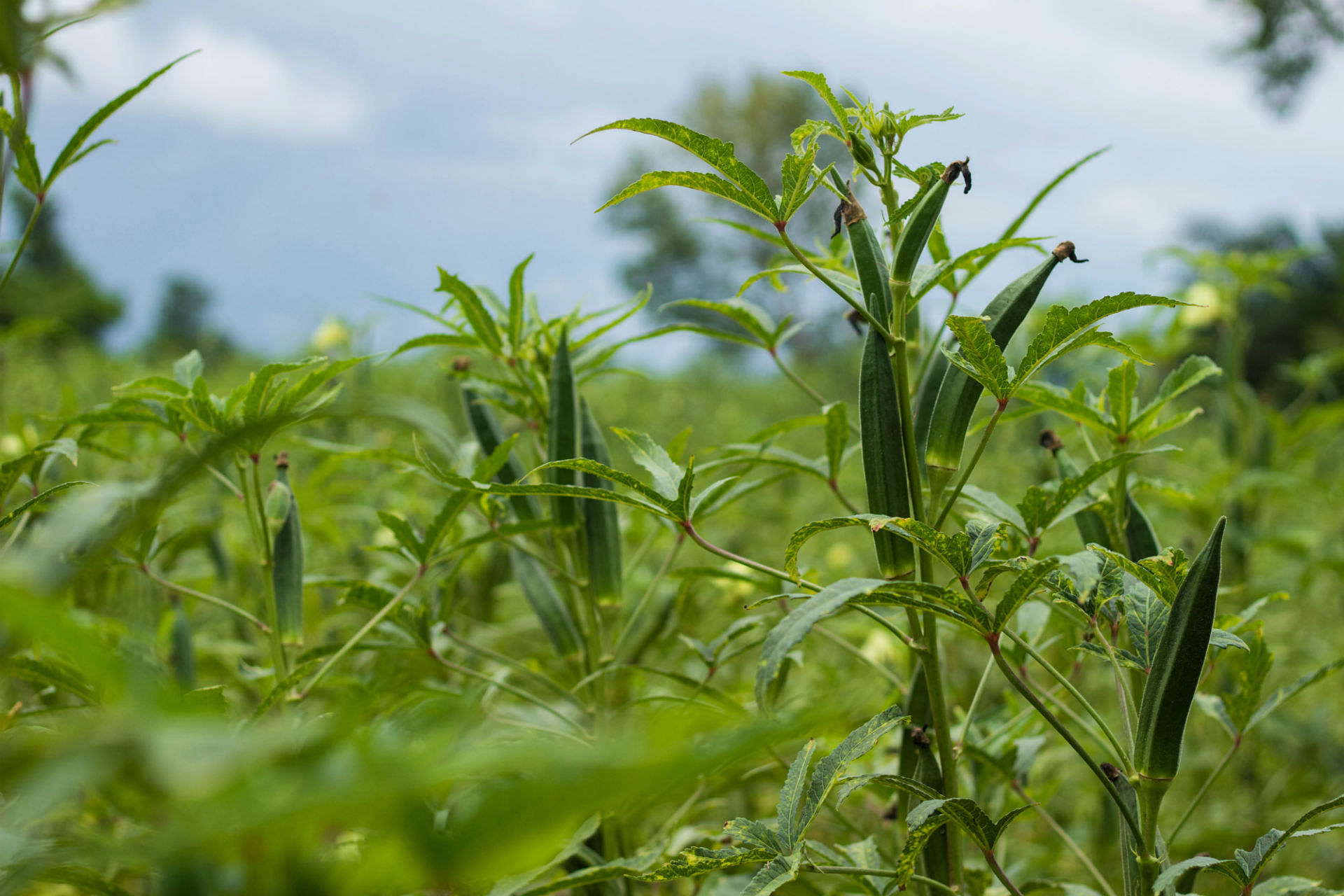
Plant Name- Okra
Scientific Name - Abelmoschus esculentus (L.)
Family- Malvaceae
Hindi Common Name- Bhindi (भिंडी)
Marathi Common Name- Bhendi( भेंडी).
Introduction-
-
Lady Finger or Okra is also known as ‘Bhindi’ and is an important vegetable crop in India.
-
It is grown in both tropical and sub-tropical regions and also in the warmer parts of the moderate regions.
-
100g of edible okra’s nutritional value gives 1.9g protein, 0.2g fat, 6.4g carbohydrate, 0.7g minerals and 1.2g fibres.
-
As a foreign exchanger crop, Okra or Lady Finger has a good potential and it accounts for 65% of the export of fresh vegetables.
-
It is cultivated in the area of about 0.35mt/ha and its production is 3.5mt/ha and productivity of 9.6mt/ha.
Location:
Uttar Pradesh, Bihar, Orissa, West Bengal, Andhra Pradesh, and Karnataka are the major Lady Finger /Okra producing states in India.
Season:
-
It is grown in Kharif Season in the month of June-August
-
It also grows in Zaid season in the month of January – March.
Climate:
-
During the growing period, it requires long warm season.
-
In humid condition, it gives good yield.
-
It grows well within a temperature range of 22-35°c.
-
It grows the best in rainy season and in heavy rainfall areas.
-
It is highly receptive to frost injury.
-
Below 20°c seeds will fail to germinate.
Varieties:
|
VARIETY |
RELEASED BY |
SPECIAL FEATURES |
|
Pusa Makhmali |
IARI |
Produces light green fruits. Highly susceptible to Yellow Vein Mosaic Virus. (YVMV). |
|
Punjab no.13 |
PAU |
Suitable for cultivating in spring-summer season and fruits are light green and 5ridged and of medium length. Suspectible to mosaic. |
|
Parbhani Kranti |
MKV |
Fruits are medium long with tender smooth surface at marketable stage. Average yield is 8.5-11.5 t/ha in 120 days. |
|
Arka Anamika |
IIHR |
Fruits are borne in two flushes and they are borne on the first stem 45-50 days after sowing during second flush. Fruits are spineless with 5-6 ridges. |

Soil Requirement:
-
It grows well in all kind of soils.
-
For its cultivation, Sandy loam and clay-loam soils are the best.
-
The optimum pH range is 6-6.8.
-
The soil should have good internal drainage.
-
Soil with high organic matter is preferred so that cartful of FYM or compost should be assimilated during land preparation.
Land Preparation:
-
2-3 plowing is needed for well prepared land.
-
At the time of land preparation, well decomposed FYM 25t/ha is integrated into the soil.
-
It is sown on flat soil or on ridges.
-
Sowing should be done on ridges if the soil is heavy.
-
Neem cake and poultry manures helps in improving the growth of plant and the yield in this crop.
-
By using neem cake and poultry manures or other compost it is possible to reduce the use of fertilizer.
Seed Rate & Sowing Time:
-
During summer season, the seed rate is 5-5.5Kg seeds/ha.
-
During rainy season, the seed rate is 8-10Kg seeds/ha.
-
Seed rate normally depends on the germination percentage of spacing and season.
-
Seeds should be soaked in a solution of Bavistin (0.2%) for 6 hours before sowing them.
-
Then the seeds should be kept to dry in shade.
-
The seeds are dibbled on both the sides of the furrows at a spacing of 60 x 30cm in Kharif season and 30 x30cm in summer season.
Spacing:
-
In Okra, ridges and furrow type of arrangement is done.
-
At a spacing of 75 x 30 cm and 60 x 45 cm hybrid varieties are planted.
-
3-4 days before sowing pre-soaking irrigation is very beneficial.
-
The seeds germinate in about 4-5 days.
Irrigation:
-
During summer, the crop requires appropriate moisture in the soil for faster growth.
-
Drip irrigation is most useful to the crop as it provides consistent moisture throughout the season.
-
The daily water demand of the crop is 2.4 liter for a day during the early growth stage.
-
During the peak growth stage it demands 7.6 liter per day.
-
During the initial growth stage irrigation should be done daily for 75 minutes and during peak growth stage it should be done for 228 minutes with a conductor capacity of 2lph.

Manures & Fertilizers:
-
In order to maximize the yield in the rows before sowing for one hectare of land about 30 t of FYM (Field Yard Manure), 350 kg Super phosphate, 125 kg Murate of Potash and 300 kg Ammonium sulphate should be applied.
-
Through fertigation, nitrogen should be applied in three split doses.
Harvesting:
-
Flowering starts from 35-40 days after planting.
-
Crop starts harvesting in 55-65 days after planting when pods are 2-3 inches long. Pods are tender at this stage.
-
It should be harvested after every 2-3 days as the Okra pods grow very fast.
-
The pods should not mature on the plant because this will hinder more pods from growing and will reduce the production of the plant.
-
Okra should be handled carefully because the pods blemish easily.
Yield:
The yield differs from 5-7 t/ha in summer and 8-10 t/ha in the rainy season.
Storage:
-
A fresh pod should be stored for 7-10 days in 7-10 degree temperature and 90-95% humidity.
-
If the temperature will be below 7 degree, it would lead to chilling injury which will lead to discoloration of surface, pitting and decay.










